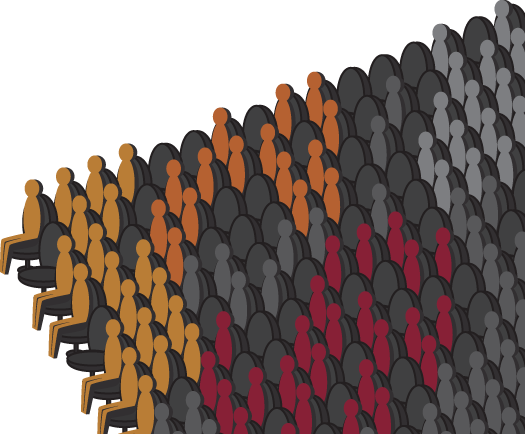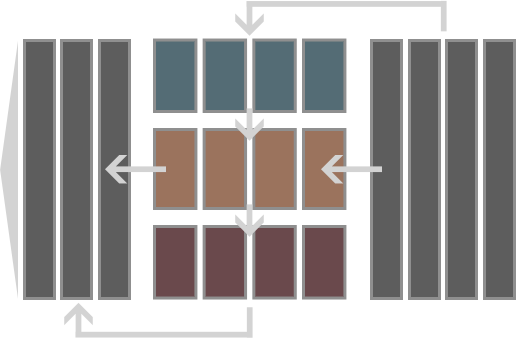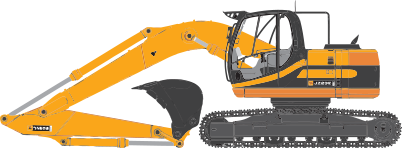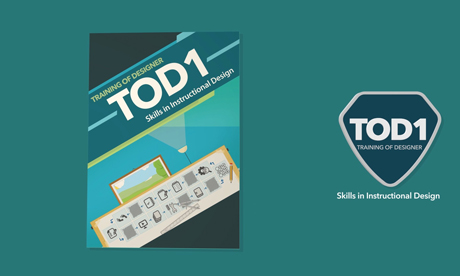Essential Skills in Instructional Design
Course Code TOD1
Duration 3 Days / 24 Hours
Fees 1290 $
Introduction
This program offers you the basics needed for instructional design and also provides you with the design gradually, so that your designs become smoother and your programs stronger; and all of this at great speed. Moreover, you will use a design strategy composed of sixteen steps, in addition to many strong techniques that make your program strong and full of exercises, fun and interest.
Who is this program for?
This program is directed at trainers, new instructors, trainers who did not undergo a formal training relevant to train of trainers, training managers and training designers.
Program’s objectives
At the end of this training program, each learner will be able to:
- Design the training based on the learning strategy composed of seven basic steps.
- Use the four-phase learning cycle in design.
- Apply the Accelerated Learning foundations to design professional courses.
- Apply the sixteen-step design system model.
- Distinguish between training, education and developing.
- Analyze the learners to determine the course’s content.
- Plan for learning design projects.
- Collect tasks’ lists.
- Arrange work tasks by priority.
- Analyze the tasks to determine the course’s content.
- Identify the restrictions affecting the course design.
- Write the four-component learning objectives.
- Write the course objectives based on performance.
- Design tests and exercises in order to assess the performance.
- Design activities before the course and after it.
- Choose the most appropriate learning techniques.
- Determine the organization and “flow” optimized for the content.
- Develop the course’s materials (i.e. the learning plan, the manual).
- Verify the accuracy of the course design.
- Distinguish between Kirkpatrick's four assessment levels.
- Assess the extent of the session’s effectiveness.
- Formulate a post-training plan.
- Apply the Adult Learning principles.
- Work with experts.
What You Will Learn?
Analysis Phase
Why use the Instructional System Design.
What is the difference between training, development and education?
A sixteen-step model for the Instructional System Design.
The front-end analysis techniques.
The most important standards in learners’ analysis.
How to design learning for different learners.
When training is the solution to meeting needs, and when it is not.
Two basic techniques to discover training needs.
Key questions necessary to identify the needs.
When to analyze the needs.
The forty restrictions in project planning.
Estimating the design time.
The important factors in the selection of tasks.
Questions to be asked when analyzing tasks.
The subject’s analysis.
Four basic analysis techniques.
Preparing the tasks’ list.
The errors in writing the tasks’ list.
How to arrange the tasks according to priorities.
Twenty-four tips that should be known while interviewing the SME’s.
Design Phase
The most important questions asked regarding objectives and their answers.
Eleven benefits of formulating the learning objectives professionally.
The four components of the learning objective.
How to write the learning objectives rapidly and easily.
Thirteen factors that should be present in the learning objective.
How to prepare a strong design, even if you are not an expert.
A seven-step learning strategy.
Identifying the learning steps.
When are the tests performed.
The tests’ types and conditions, planning for them and designing them.
Designing the pre- and post-session activities.
Development Phase
Identifying the learners’ activities.
More than one hundred learning techniques that you can use.
Ten standards that help you to choose the presentation techniques.
Ten standards that help you to choose the exercising techniques.
The three factors necessary in determining the assessment techniques.
The seven steps necessary for a smooth sequence in the content.
Instructions for the preparation of the lesson.
Organizing the course.
Preparing and coordinating the lesson plan.
Twenty items that should be present in the lesson plan.
Twelve tips necessary for the preparation of the course’s manual.
How to increase cooperation among the group members.
The five steps necessary to achieve in the course.
Ten tips for increasing the content application to the fullest extent possible.
Twelve tips necessary for the flyers.
The seven principles of Adult Learning.
How to increase the level of attention.
Implementation Phase
Developing a management plan for training.
Eleven items necessary for the management plan.
Ten tips to enhance healthy competition.
Managing training time effectively and efficiently.
Encouraging learners to participate in work and be involved with it.
Using the review and summarization technique while delivering the course.
Enhancing the capacity to virtually practice the new skills at work.
The difference between a trainer, instructor, coach and facilitator.
The seven foundations in Accelerated Learning.
Managing the group dynamics.
The three learning factors.
Evaluate Phase
How to evaluate learning.
Kirkpatrick's four evaluating levels.
Distinguishing between the four evaluation types and determining when to use them.
How to measure improvement in work performance.
More than sixty items in which evaluation should be included.
Checklists to verify the course.
Many models helping you in evaluation.



















































































































































































